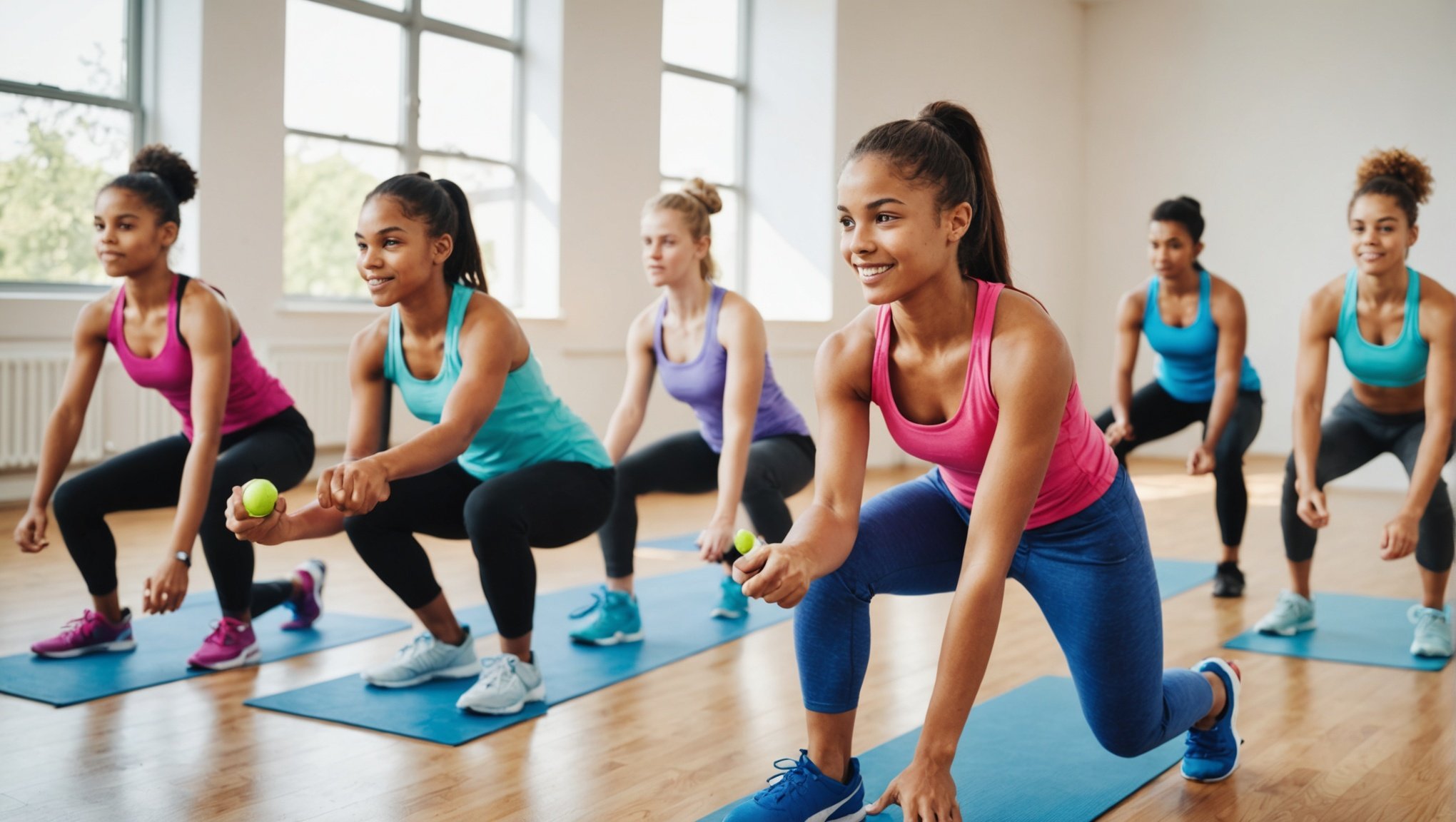Understanding Interactive Workout Games
Interactive workout games have transformed the way teens approach fitness, combining exercise with engaging gameplay. These games have evolved significantly, integrating advanced technology to appeal to this tech-savvy generation. They are no longer just simple activity-based challenges but have become immersive experiences that boost motivation and fun.
Popular Types of Interactive Workout Games
Teens today have a myriad of interactive workout games to choose from, each catering to different interests and fitness goals. Dance-based games, like “Just Dance”, promote cardiovascular health through fast-paced choreography. Meanwhile, immersive virtual reality exercises let users step into different worlds, encouraging physical activity through exploration and adventure. There is also the rising popularity of gamified fitness apps that turn workouts into challenges and competitions, fostering social interaction and friendly rivalry.
Also to discover : Revitalize Family Bonds and Conquer Stress: The Impact of Digital Detox Camps
Role of Technology in Teen Fitness Engagement
The infusion of technology is pivotal in enhancing teens’ fitness engagement. Interactive workout games leverage elements like real-time feedback, personalisation, and rewards systems. These features not only make workouts more enjoyable but also help track progress and set new fitness goals. This use of technology keeps teens connected to their fitness regime, promoting regular physical activity through innovation and fun.
Impact of Interactive Workout Games on Teen Fitness
Interactive workout games have gained notable popularity for their potential to improve physical activity levels and enhance fitness outcomes among teenagers. These games blend entertainment with exercise, creating a unique approach to maintain motivation and engage in regular workouts.
Also to read : Exploring the Impact of Mindfulness and Yoga on Addiction Recovery: Can They Lower Relapse Rates?
Research Findings
Recent studies demonstrate that interactive games significantly boost physical activity levels. One study reports that teens using these games increase their weekly exercise by over 20%. These games provide an enticing alternative to traditional exercises, addressing the common challenge of waning exercise commitment among teens. Unlike conventional workouts, these engaging platforms sustain enthusiasm, resulting in improved fitness outcomes.
Expert Perspectives
Fitness professionals highlight the pivotal role of exercise motivation in a teen’s fitness journey. Interactive workout games excel in satisfying this need. By turning exercise into a pleasurable, game-like experience, these platforms successfully keep teens motivated. This adaptation to evolving youth interests ensures a sustained commitment to exercise routines that more traditional methods often fail to maintain.
Personal Experiences
Teens themselves have expressed positive outcomes through interactive games. Testimonials reveal enhanced fitness levels and increased enthusiasm for daily exercise routines. Many families report that integrating interactive games into their workouts not only improves individual fitness but also strengthens family bonds, creating a collaborative environment for achieving fitness goals together.
Practical Integration of Interactive Workout Games
Interactive workout games have revolutionised the way we view fitness routines. Choosing the right game can greatly enhance your workout experience. To begin with, assess your fitness level and goals. Some games are aimed at high-intensity workouts, while others focus on flexibility or balance. Understanding where you stand will help in game selection that best suits your needs.
Creating an environment that fosters productivity and motivation is crucial. Ensure you have enough space to move freely without obstacles. This not only increases accessibility but also reduces the risk of injury. Consider investing in equipment like yoga mats or resistance bands, if recommended by the game.
Balancing screen time and physical activity is essential. It’s easy for sessions to become screen-intensive. To prevent this, set a routine that includes warm-ups and cool-downs away from the screen. Additionally, keep your environment bright and open to avoid eye strain.
Effective integration of workout games into daily life doesn’t just end with finding the right game and environment. Regular breaks and routine evaluation to assess your progress can enhance your experience. By staying committed, interactive workout games can be a fun and effective part of your lifestyle.
Addressing Challenges in Promoting Fitness Through Games
Promoting fitness through games, especially among teens, involves navigating a range of engagement barriers. Understanding these can help tailor strategies that resonate with this age group.
Common Challenges
One major barrier is the misconception that gaming and exercise cannot coexist. Many teens perceive gaming as an indoor, sedentary activity rather than a potential avenue for physical wellness. Additionally, there’s often a general lack of interest in traditional fitness methods, which can stem from routine-based activities not holding appeal for a young audience. Identifying these attitudes allows for creating experiences that blend gaming with physical activity effectively.
Effective Solutions
To address these challenges and engage teens, interactive games that emphasize movement can act as a bridge. Encouraging the involvement of family and friends in these interactive sessions creates a sense of community and camaraderie. Hosting community events focused on gaming workouts fosters wider participation and engagement. Together, these steps can transform perceptions and make fitness more appealing.
Long-term Engagement
To ensure sustained interest in fitness games, it is vital to set achievable fitness goals within the gaming framework. This can help maintain motivation and provide a sense of accomplishment. Regularly tracking progress and celebrating successes reinforces positive attitudes towards maintaining an active lifestyle.











